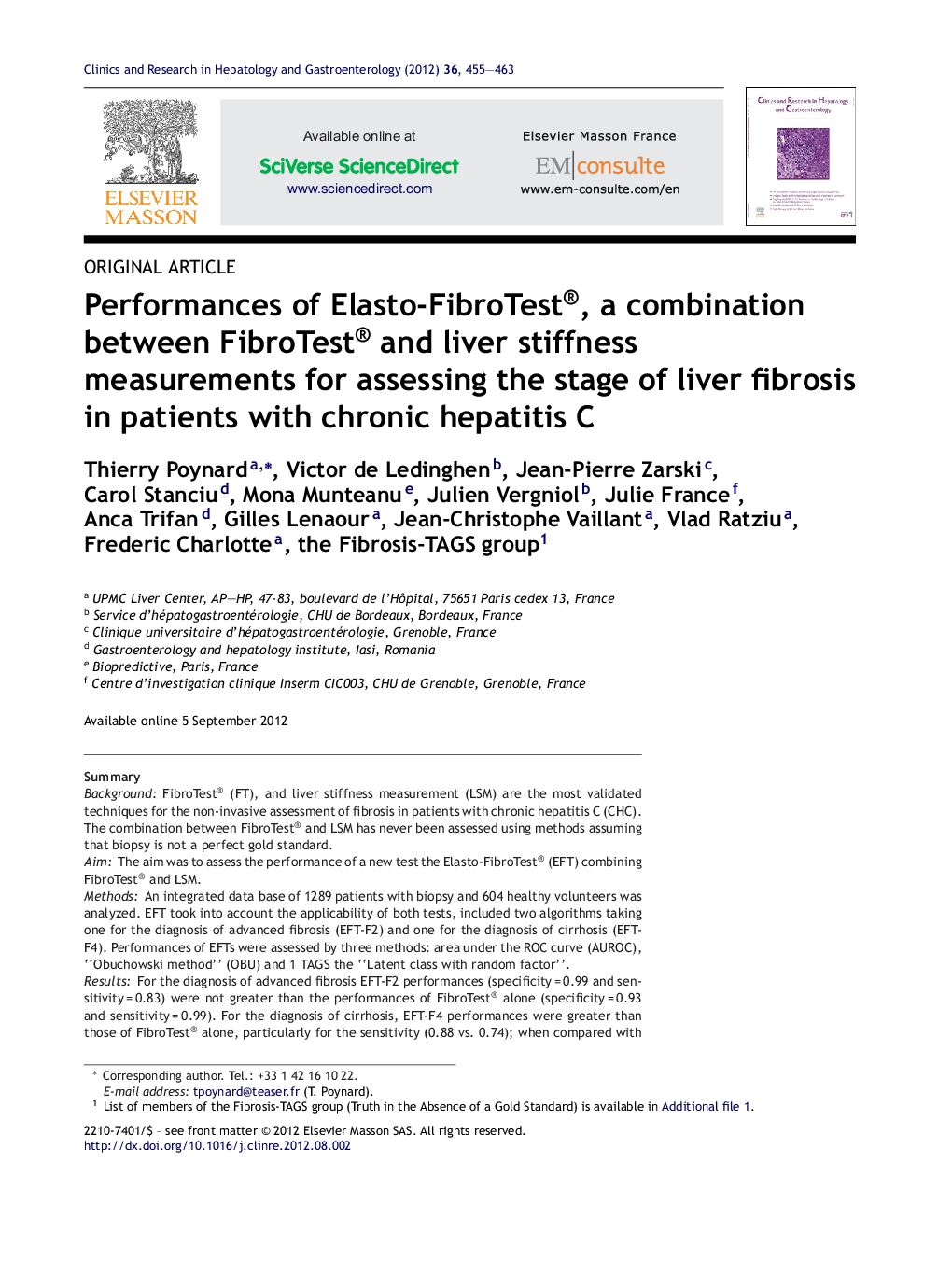| Article ID | Journal | Published Year | Pages | File Type |
|---|---|---|---|---|
| 3286673 | Clinics and Research in Hepatology and Gastroenterology | 2012 | 9 Pages |
SummaryBackgroundFibroTest® (FT), and liver stiffness measurement (LSM) are the most validated techniques for the non-invasive assessment of fibrosis in patients with chronic hepatitis C (CHC). The combination between FibroTest® and LSM has never been assessed using methods assuming that biopsy is not a perfect gold standard.AimThe aim was to assess the performance of a new test the Elasto-FibroTest® (EFT) combining FibroTest® and LSM.MethodsAn integrated data base of 1289 patients with biopsy and 604 healthy volunteers was analyzed. EFT took into account the applicability of both tests, included two algorithms taking one for the diagnosis of advanced fibrosis (EFT-F2) and one for the diagnosis of cirrhosis (EFT-F4). Performances of EFTs were assessed by three methods: area under the ROC curve (AUROC), “Obuchowski method” (OBU) and 1 TAGS the “Latent class with random factor”.ResultsFor the diagnosis of advanced fibrosis EFT-F2 performances (specificity = 0.99 and sensitivity = 0.83) were not greater than the performances of FibroTest® alone (specificity = 0.93 and sensitivity = 0.99). For the diagnosis of cirrhosis, EFT-F4 performances were greater than those of FibroTest® alone, particularly for the sensitivity (0.88 vs. 0.74); when compared with LSM, EFT-F4 performances (specificity = 0.99 and sensitivity = 0.99) were also greater than those of LSM alone particularly because of its lower specificity (0.92).ConclusionFor the diagnosis of cirrhosis the Elasto-FibroTest® has higher performances than FibroTest® or FibroScan® alone. No improvement in performance has been observed for the diagnosis of advanced fibrosis vs. FibroTest® alone.
